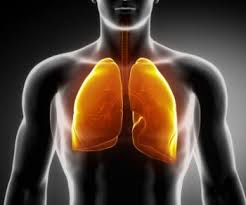 Respiratory failure occurs when there is ventilation-perfusion mismatch. In simple words, respiratory failure occurs when oxygen saturation or the partial pressure of oxygen in arterial blood (PaO2) decreases or when partial pressure of Carbon dioxide in arterial blood increases (PaCO2). When lungs fail to transport oxygen adequate oxygen to blood, then the partial pressure and saturation of oxygen and in blood decreases, or when carbon dioxide fails to leave blood then partial pressure of Carbon dioxide in arterial blood increases. Usually an underlying pathological mechanism is involved in an inadequate transportation of gases across the alveolar surface. If any of these two conditions is found in a patient, that is either he has a low oxygen saturation or PaO2 or high PaCO2, then we can say that he has respiratory failure. But according to PaCO2 level, respiratory failure is divided into two types. Examples of type 1 and type 2 respiratory failure are given below;
Respiratory failure occurs when there is ventilation-perfusion mismatch. In simple words, respiratory failure occurs when oxygen saturation or the partial pressure of oxygen in arterial blood (PaO2) decreases or when partial pressure of Carbon dioxide in arterial blood increases (PaCO2). When lungs fail to transport oxygen adequate oxygen to blood, then the partial pressure and saturation of oxygen and in blood decreases, or when carbon dioxide fails to leave blood then partial pressure of Carbon dioxide in arterial blood increases. Usually an underlying pathological mechanism is involved in an inadequate transportation of gases across the alveolar surface. If any of these two conditions is found in a patient, that is either he has a low oxygen saturation or PaO2 or high PaCO2, then we can say that he has respiratory failure. But according to PaCO2 level, respiratory failure is divided into two types. Examples of type 1 and type 2 respiratory failure are given below;
Type 1 Respiratory Failure
In type 1 respiratory failure oxygen saturation or PaO2 (partial pressure of oxygen in arterial blood) decreases (less than 8kPa), but the PaCO2 (partial pressure of Carbon dioxide in arterial blood) may decrease or remain normal. These conditions are usually acute in which patient becomes tachypneic, able to remove adequate Carbon dioxide out of the blood but can’t maintain adequate blood oxygen levels.
Examples of Type 1 Respiratory Failure
Examples or type 1 respiratory failure are;
- Pneumonia
- Pulmonary embolism
- Pulmonary edema
- Acute asthma
- Emphysema
- Acute respiratory distress syndrome (ARDS)
- Pulmonary fibrosis
Type 2 Respiratory Failure
In type 2 respiratory failure, hypoxia occurs (PaO2 becomes < 8kPa) but partial pressure of Carbon dioxide in arterial blood (PaCO2) increases (becomes > 6.0 kPa). Patient fails to take in enough oxygen and wash out carbon dioxide. In this condition the respiratory drive of patient is affected, that is patient can’t increase his respiratory rate in response to hypoxia (decreased blood oxygen level) and hypercapnia (increased blood Carbon dioxide level). Due to hypoventilation patient fails to wash out Carbon dioxide, this results in an increase in blood level of carbon dioxide, which has its own hazards.
Examples of Type 2 Respiratory Failure
Examples or type 2 respiratory failure include;
- Pulmonary causes
- Chronic asthma
- COPD
- Pneumonia (when PaCO2 also starts to increase)
- Pulmonary fibrosis (advanced, when PaCO2 also starts to increase)
- Obstructive sleep apnoea syndrome
- Reduced respiratory drive and hypoventilation
- Sedative drugs, such as benzodiazepines, opiods.
- Brain tumor or trauma
- Chest-wall or rib cage problem that results in decreased expansion of chest. Forexample,
- Flail chest
- Kyphoscoliosis

